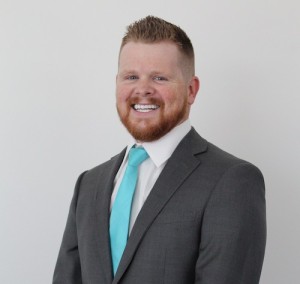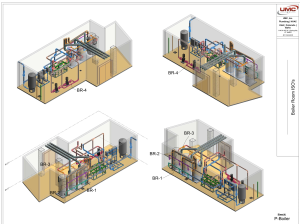 One of the ways UMC has grown so rapidly is by embracing new technology. In the last twenty years, the world of commercial construction has changed, and new technologies like virtual design and construction tools have been a big part of that. Here at UMC, we’ve embraced using these tools and more to help us be more productive and improve quality on the job site. We recently chatted with Chase Frandsen, the Director of Building Information Modeling/Virtual Design and Construction (BIM/VDC), about how these tools are used at UMC.
One of the ways UMC has grown so rapidly is by embracing new technology. In the last twenty years, the world of commercial construction has changed, and new technologies like virtual design and construction tools have been a big part of that. Here at UMC, we’ve embraced using these tools and more to help us be more productive and improve quality on the job site. We recently chatted with Chase Frandsen, the Director of Building Information Modeling/Virtual Design and Construction (BIM/VDC), about how these tools are used at UMC.
Chase has been a pioneer in the adoption of VDC here at UMC. He was a starting apprentice when he initially joined UMC 7.5 years ago. However, he quickly gained valuable field experience and became a master plumber. However, he had an affinity for plan reading and details, so he began helping the layout department handle the plumbing sleeves for our projects.
One of the things Chase has excelled at has been learning new technologies that have helped us improve, like the use of robotic total stations. This incredible tool helps to measure vertical and horizontal angles and slope distances via remote control. You set it up using control points, and then, similar to a map, it will guide you to place sleeves accurately using a tablet, ensuring that you have the correct place for a tub/shower or anything plumbing-related. The fantastic thing about this tool is that it also recognizes where you are in the building design plans as you’re working. It makes it so much easier to coordinate and get accurate measurements in the field.
Using this tool, we’ve improved how we do plumbing sleeves, reduced errors, and enhanced layout accuracy. Under Chase’s guidance, our accuracy using total stations improved from 68% to 98% or higher on the job site. This level of accuracy has improved our installation speed and the quality of our work.
Another incredible tool that UMC has wholly embraced is VDC. This software has allowed us to create models of where everything goes, from sleeve placement to pipes. It’s convenient in the pre-production stages because it allows us to coordinate with other trades and the building design team to see where everything goes. On one of our latest projects, Worthington Towers, the design team required 3D models from all the trades working on the project to see what worked and what didn’t before the building process started. After designing the plumbing system, we could assemble the unit fittings and “kit” the project. Kitting the project allows our team to have everything needed for the unit in one place. We could take the 3D model, cut pipe lengths for each unit, and have it pre-assembled for the team in the field. This is a primary benefit of using VDC. We are now kitting every plumbing project that comes to us.
These are just a few fantastic tools UMC has embraced while Chase has been here. With his help, we continue to learn new technologies and implement them in the field to be more efficient and improve the quality of our work. It’s pretty cool to see how far these technologies have come in recent years and their potential to change how we do things going forward. We’re grateful to have Chase on our team to help us utilize these tools and more!






